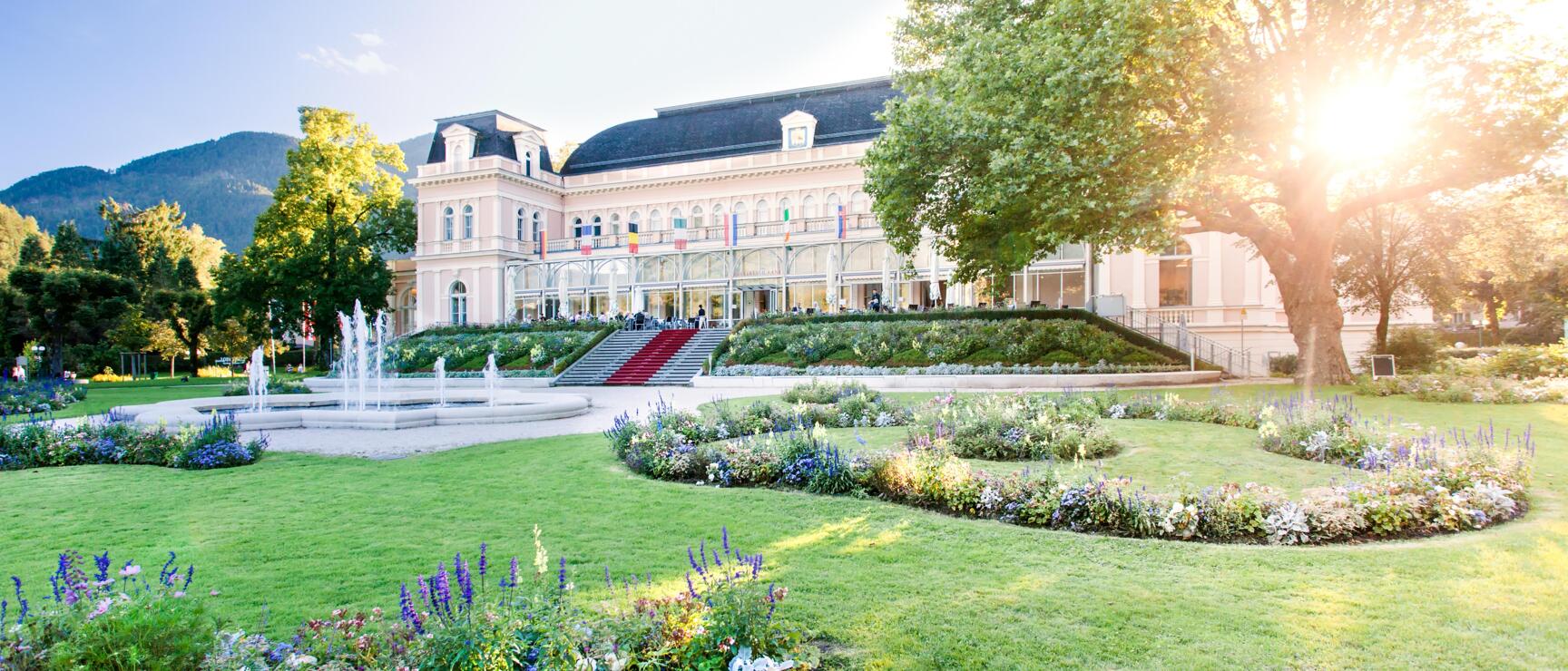
Bad Ischl
The secret capital of the Salzkammergut region
Bad Ischl is not just a place to visit. It is a way of life – rooted in the imperial era, yet open to the present. Here, where Emperor Franz Joseph once spent his summer retreats, a sense of ease can still be felt today. Amidst grand architecture, blooming parks and the gentle sound of the River Traun, the Salzkammergut reveals its cultivated side.
Operetta concerts at the historic Congress House keep the town’s musical heritage alive, while exhibitions in the former imperial stables offer contemporary perspectives. The combination of tradition and avant-garde shapes the townscape and makes Bad Ischl a centre of culture.
But Bad Ischl is more than a stage. It is also a place of activity. The Katrin, the town’s local mountain, offers panoramic trails, Alpine tranquillity and views of the Salzkammergut that stay with visitors. Those seeking more strenuous activities can explore hiking and mountain biking routes around the town and experience nature in its most original form – quiet, fragrant and expansive.
The Kaiservilla tells a story of history with a personal touch: a summer residence, a retreat and, at times, a setting for world affairs on a small scale. Biedermeier buildings, Art Nouveau façades, narrow lanes and quiet squares invite visitors to pause and explore.
Bad Ischl shows how much strength a place can hold without having to be loud to make an impression. It is a place for people who seek authenticity and appreciate beauty in the details.
Meet Bad Ischl
Excursion destinations in Bad Ischl
Architecure in Bad Ischl
The architecture of Bad Ischl reflects a mix of historic buildings, traditional Alpine design and influences from various periods. The town on the River Traun is considered the birthplace of the Sommerfrische (summer retreat). Emperor Franz Joseph I and Empress Sisi were soon followed by many others on their holidays: first the high nobility, then wealthy industrialists and eventually the middle class.
Hotels, coffee houses, casinos and promenades were built, attracting Austrian celebrities and visitors from across Europe. Many artists, including Anton Bruckner, Johannes Brahms and Franz Lehár, also discovered the charm of summer holidays in the countryside. In time, holidaymakers began building splendid villas, which still shape the townscape today.
Architectural highlights in Bad Ischl
How Bad Ischl became the Emperor’s town
It all began with the Emperor. His parents had been childless for a long time until they visited Ischl for spa treatments in the healing saltwater. Shortly afterwards, Franz Joseph was born. As he quite literally had Ischl in his blood, he spent 83 of his 86 summers here.
Of course, an emperor never travelled alone. The longer Franz Joseph reigned, the more people joined him on his summer retreats. Eventually, half of Vienna seemed to head for Ischl each summer. “When I’m in Ischl, it always feels as if the surrounding mountains are just a kind of stage set placed on Vienna’s Ringstrasse,” remarked the satirist Karl Kraus. By then, the small town of Ischl had long since become an imperial spa resort.
The beloved countyside
The Emperor seemed to love Ischl above all for its surroundings. Perhaps that is why he often left the town early in the morning, as he preferred spending time in the mountains, enjoying hours when – for once – no one demanded anything from him. The fact that more than a thousand antlers still hang on the walls of the Kaiservilla today has less to do with a passion for hunting and more with the sense of freedom each hunting trip provided him.
The Kaiservilla is a building that would be considered a palace in many other countries. Its interior is surprisingly homely, giving the impression that the residents have only just left for an outing and will soon return. Even the desk in the study seems as if someone had been working there the night before. It was here that the Emperor once wrote the manifesto “To My Peoples!”, in which he declared war on Serbia – a decision that would lead to a European catastrophe.